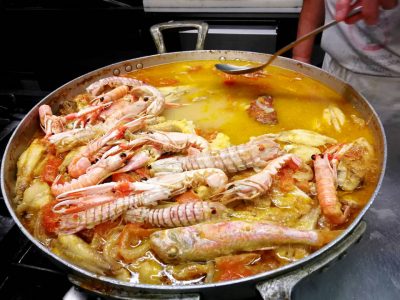Grottammare
Grottammare, historic village, located north of the mouth of the Tesino river in the province of Ascoli Piceno in the Marche region. The inhabited center extends along the coast to the slopes of the nearby hills where the ancient medieval village stands out. The intense urban development, still in progress, makes the inhabited center extend towards the mouth of the Tesino and along its course towards the interior. To the south of the mouth of the Tesino is the hamlet of Ischia, which over the years has become an area of the city that forms a single urban agglomeration with the neighboring San Benedetto del Tronto.
Grottammare is crossed by the 43rd parallel of the northern hemisphere
Grottammare enjoys a particularly beautiful climate, with relatively temperate winters and hot, but not sultry, summers. The average annual temperature is about 15 ° C while the average rainfall is between 600 and 700 mm.
Grottammare has very ancient origins. There are anthropogenic traces dating back to the Neolithic. A Picene necropolis dating back to the VII-V century BC was discovered on its territory
Possession of the Abbey of Farfa in the Middle Ages, it was given to Fermo in 1214 by Aldobrandino d’Este. Between the thirteenth and sixteenth centuries it was disputed for a long time between Fermo and Ascoli. The current structure of fortified walls dates back to the sixteenth century, characterized by violent disputes with neighboring communities and pirate attacks.
From the eighteenth century began the expansion towards the coastal area, whose urban plan, the work of the Lombard architect Pietro Augustoni, is due to the intervention of Pope Pius VI (1779).
The meeting held there on 12 October 1860, between Vittorio Emanuele II, housed in Palazzo Laureati, and a delegation of Neapolitan notables who formally offered him the Kingdom of the two Sicilies is of enormous importance for national history. Three years later (1863) Grottammare was connected by rail with Ancona and Abruzzo. The advent of rail transport gave further impetus to the economic and demographic development of the town. Grottammare was shelled on 23 June 1916 by two Austro-Hungarian destroyers, put to flight by the intervention of an armed train of the Regia Marina.
The urban plan takes up the Roman one .
Monuments and places of interest
Religious architectures:
– Church of San Martino – attested as early as the 10th century
– Church of Sant’Agostino – XV-XVI century
– Church of Santa Maria ai Monti – XVI century
– Church of Santa Lucia – XVI century
Civil and military architectures:
– Castle – IX-XIII century















